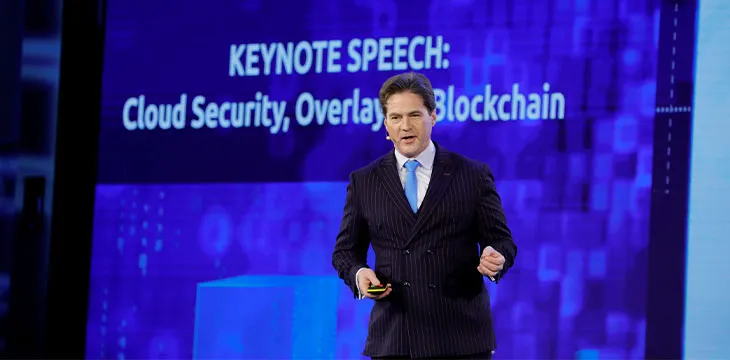|
Getting your Trinity Audio player ready...
|
What data should be seen by all, how should it be stored, and who should have access to it? Dr. Craig S. Wright continues his Masterclass series with Session Two, expanding more on issues of data storage and privacy that will impact everyone in the future.
The full video first day’s “The Bitcoin Masterclasses” video is here, containing the first four sessions. Everyone is urged to take a look, even if only to familiarize yourself with the concepts.
Like all Craig Wright tutorials, this series contains a mixture of technical detail, history, law, political philosophy, and ethics. The tutorials concern not only what Bitcoin can do but also the issues surrounding how, when and what data should be accessible in a future where almost every action produces data.
The “how, when, what” questions are central to questions of privacy and access to information. We need to ask what sort of data may be accessible, plus the methods used to access it and the timeliness of the process.
Other issues to consider include: Purpose (what limits should there be?); Fairness (from both parties’ perspectives); Lawfulness and controls on this; Transparency or even “translucency” (accessible only when needed); Data-minimization and storage limits. Session Two looks at all of these.
Dr. Wright provides anecdotal examples along the way. A doctor may access your private medical records for treatment purposes but not to sell that information to the media. National Security Agency (NSA) contractor Edward Snowden blew the whistle on intelligence-gathering activities, actions people see as either heroic or villainous, but how did he even gain access to that data over an extended time without anyone being alerted? No matter the results, the fact he was able to do this is a security flaw for other types of data.
Technology won’t change the system, only humans can
Dr. Wright also calls for greater political engagement for people who have opinions on legal conditions. While we don’t always like the rules that exist, the only way to change them is through logically and intellectually-sound debates (not online shouting matches). Attempting to overcome or bypass rules through technology isn’t the right approach, and one would probably see those technologies banned or defeated anyway. When we lose transparency, we lose rights.
“If we want to have a free society, we need to be able to openly communicate.” To voice your opinion, you need to put yourself at risk (of opposition), or your opinion is meaningless. This matters in the public sphere, not private conversations.
You can’t have a real conversation if we don’t know who we’re talking to, and he says that’s one of the reasons he opposes anonymity so frequently. A pseudonym may mask your real-world identity, but it becomes a problem when you have multiple pseudonyms to pretend you’re numerous people, agreeing and amplifying your own arguments—as happens on Twitter.
Scaling and the ‘problem’ of blockchain data pruning
Scaling will actually help privacy because, in the future, if everyone has been storing all data on the blockchain for years (or centuries), there will be too much information to trawl through. However, you’ll still be able to prove things if you know how/where to find the data (e.g., relevant private keys).
If there’s a necessity to store certain data, services will exist to keep it and likely specialize in the type of data they hold. However, with Bitcoin’s SPV verification, you’ll always be able to prove that a particular file existed at a specific time, even if the file itself is no longer there. The Bitcoin blockchain even allows for a form of “provable deletion” if the keys to access that data are destroyed.
We don’t want the blockchain to be like “psychohistorian” Hari Seldon from Isaac Asimov’s “Foundation” series, he says, who had records of every single event for over ten millennia.
nChain‘s Director of Research, Owen Vaughan, opens the session with a question about how Bitcoin developers should provide levels of data access. Dr. Wright suggests it be tokenized, with digital tokens created with varying access levels and given to users individually.
As with the previous session, he asks viewers to think more about what Bitcoin and the blockchain could do, expanding on the 2008 white paper‘s original title:
“Everyone thinks about cryptocurrency. What is beyond that? What is Bitcoin’s real purpose? It is a digital token system that allows for the exchange of money, the exchange of value, the saving of records, and the tracking and transmission of information. All of the above. Let’s think about what that means.”
He notes that his company, nChain, is actually working to build the technologies he describes, or at least to make them more accessible for people to use. One challenge is communicating to the world that all this is possible and tools are available. The Bitcoin Masterclasses series is one effort to spread that message.
Watch: New Technologies, New Futures for Nations

 07-15-2025
07-15-2025 





